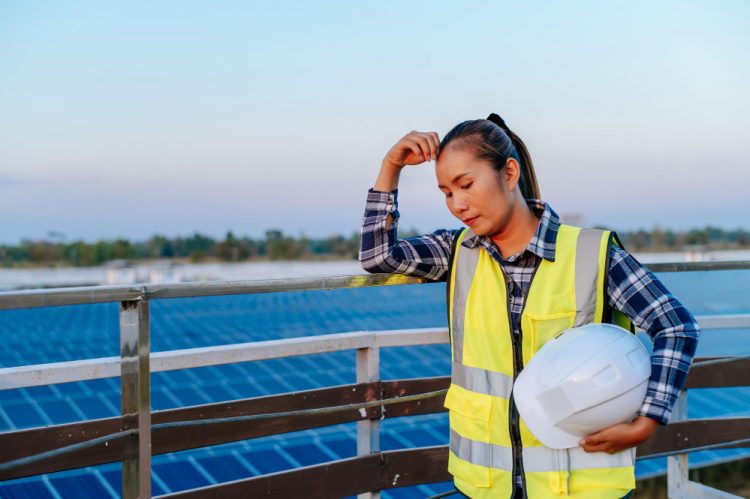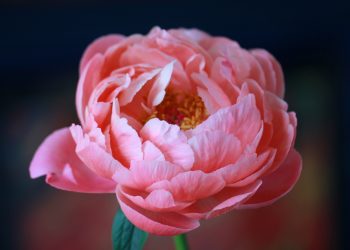As Thailand accelerates toward renewable energy adoption, solar power is quickly becoming the country’s most popular solution for homes, businesses, and resorts. With abundant sunshine year-round, the logic seems simple: more sun equals more electricity. But in reality, this advantage hides a critical challenge that can silently drain your investment over time.
The secret installers rarely tell new customers is the Tropical Solar Paradox: Solar panels hate heat.
Every photovoltaic (PV) panel is tested under laboratory conditions at 25°C. When a panel’s working temperature soars above that benchmark, which it routinely does on a black Thai rooftop that can reach 65°C to 80°C means its efficiency immediately begins to degrade. This thermal degradation acts like a hidden tax on your energy yield, quietly reducing your power output and extending your payback period.
For instance, rooftop solar systems in Bangkok often operate at panel surface temperatures exceeding 70°C during mid-day, reducing panel efficiency by 10–15% compared to laboratory-rated performance.
What is Thermal Degradation?
It’s the reduction in energy output as temperature increases beyond optimal conditions, an unavoidable but manageable effect in solar technology.
The key to maximizing your long-term savings and achieving true energy self-sufficiency lies in choosing the panel technology built to fight this heat-induced loss.
Mono vs Poly Solar Panels: The Decisive Factor in a Hot Climate
The choice between Monocrystalline (Mono) and Polycrystalline (Poly) panels stops being a simple cost debate in a hot climate; it becomes a fundamental engineering decision based on thermal resilience.
The difference lies in the Temperature Coefficient (a technical specification) that measures how much power (as a percentage) a panel loses for every degree Celsius above the 25°C standard. The closer this number is to zero, the better the panel performs in intense heat.
The Thermal Performance Breakdown
Panel Type
Manufacturing
Typical Efficiency
Temperature Coefficient
Real-World Performance
Monocrystalline (Mono)
Single, pure silicon crystal
Higher (18%–23%+)
Lower (e.g., -0.30% to -0.40%)
Superior in heat; maintains higher voltage output.
Polycrystalline (Poly)
Multiple melted silicon fragments
Lower (15%–17%)
Higher (e.g., -0.45% to -0.50%+)
More susceptible to efficiency loss in extreme heat.
In the hot, sunny conditions common across Southeast Asia, a Mono panel’s lower coefficient can mean a fraction of a percent more efficiency maintained every single hour of daylight compared to a Poly panel. Over 25 years, this difference in thermal degradation translates to thousands of additional kilowatt-hours (kWh) of clean energy produced, directly boosting your overall financial returns.
Modern Monocrystalline panels often incorporate Half-Cut Cell and PERC (Passivated Emitter Rear Cell) technology, which further improves temperature tolerance and energy harvest. Advanced N-Type and TOPCon Monocrystalline cells now available in Thailand deliver even greater resistance to heat-induced losses and light degradation, ensuring more stable long-term performance.
According to recent field studies in Southeast Asia, Monocrystalline panels can produce 3–5% more annual energy under sustained high temperatures than Polycrystalline panels, a margin that compounds significantly over decades.
Knowing this, the critical question becomes: Is mono or poly solar PV panels best in Thailand and the tropics for a high-performance system designed for longevity in a tropical climate? For those prioritizing maximum energy yield from limited roof space, the higher power density and lower temperature sensitivity of Monocrystalline solar panels generally provide the superior long-term savings.
Why Efficiency is Your Most Valuable Asset
In a sunny location, many assume that high efficiency isn’t necessary because there’s always plenty of sun. This is a myth. Efficiency matters most where you face constraints.
1. The Space Constraint
In densely populated cities and even on private villas, roof space is always finite. High-efficiency Mono panels produce more Watts per square meter than Poly panels. This means you need fewer physical panels to achieve your target kilowatt (kW) output. You maximize the potential of your available roof area, which can be the difference between powering your air conditioning unit and not.
2. The Financial Constraint
While Polycrystalline solar panels have a lower initial product cost, their slightly higher rate of efficiency loss and lower power output per square foot means they often take longer to recoup your initial investment.
Conversely, while Monocrystalline modules have a higher upfront cost, their superior production capacity in real-world temperatures ensures a faster payback period. For a savvy investor, a quicker, more robust return trumps a minor saving on the purchase price. This makes the high-quality, high-efficiency solar panels the more cost-effective choice over the full lifespan of the system.
For example, a 5 kW Monocrystalline system in Chiang Mai can generate approximately 7,500–8,000 kWh annually, compared to 6,800–7,200 kWh from a similarly sized Poly system, resulting in faster payback and greater lifetime returns.
It’s also worth remembering that heat doesn’t just affect solar panels. High ambient temperatures can impact inverter efficiency, battery storage performance, and even wiring losses, so quality installation and component selection play an equally vital role in maintaining optimal system performance.
Smart Solar Choices: What Really Matters Beyond the Specifications
Choosing a solar system for a challenging environment like Thailand requires looking beyond the basic comparison and factoring in the specific environmental stressors:
- Humidity and Longevity: The high humidity in tropical regions demands panels with exceptional construction quality to resist moisture penetration and corrosion. While both Mono and Poly come with similar warranties, the premium manufacturing process of Monocrystalline solar panelsoften suggests a marginally greater resilience to these factors, promising better long-term durability.
- Aesthetics and Design: The sleek, uniform black colour of the Mono panel often provides better curb appeal and seamlessly integrates with modern architectural designs, a factor highly valued in high-end residential and resort applications where presentation is key. The traditional blue hueof the Poly panel tends to stand out more.
- Shading Resilience: Even partial, minor shading from surrounding palm trees or nearby buildings can dramatically reduce a system’s output. While system design and Micro-Inverters or Optimizers are the ultimate solution, pairing high-quality panels with smart energy managementtechnology is essential to mitigate these losses and maintain optimal power production.
- Dust and Air Pollution: Thailand’s dry season brings airborne dust and smog that can reduce solar output by 10–25% if panels are not cleaned regularly. High-efficiency panels mitigate this impact by maximizing yield per clean cycle.
- Cyclones and Structural Integrity: Panels in coastal or island areas such as Phuket, Pattaya, or Koh Samui should be mounted using corrosion-resistant racking and reinforced frames to withstand high winds and salt exposure.
Beyond panel types, many Thai homeowners are also turning to hybrid and off-grid solar systemsto make the most of the country’s abundant sunshine. Hybrid systems combine traditional grid-tied setups with battery storage, allowing you to store excess solar energy for nighttime use or during power outages, perfect for areas where reliability matters. Meanwhile, off-grid systemsoperate entirely independently of the national grid, making them ideal for rural homes, islands, or agricultural properties where access to electricity can be limited. Both solutions increase energy independence, provide backup power during blackouts, and maximize the return on your solar investment in Thailand’s sunny climate.
Quick Takeaways for Thailand:
- Monocrystalline panels outperform Poly panels in sustained heat.
- Prioritize lower temperature coefficients (< -0.40%).
- Look for Half-Cut, PERC, N-Type, or TOPCon cell technology.
- Invest in anti-corrosion mounting systems and quality inverters.
- Regular cleaning and maintenance ensure sustained energy output.
By focusing on the technology that best mitigates the unique challenge of solar panels extreme heat, you are not just buying a green product; you are acquiring a future-proof energy assetdesigned to generate reliable power and maximize your financial advantage for decades to come.
Final Verdict: Smart Solar Investment for Thailand’s Climate
In Thailand’s tropical conditions, Monocrystalline panels, especially modern N-Type PERC or TOPCon variants, offer the best combination of durability, performance, and long-term savings. When paired with efficient inverters and proper installation, you can expect a system that pays for itself faster and performs reliably for 25+ years.
Before you buy, always ask installers for:
- The panel’s exact temperature coefficient
- Proof of PID and LID resistance (types of performance degradation)
- Manufacturer warranty terms (performance and product)
- Installation and maintenance plans for high-heat environments
By making these informed choices, you turn Thailand’s blazing hot sun from a challenge into your most powerful renewable energy ally, and secure a sustainable, cost-saving energy future built for the tropical climate.







